#Project Wars The 20 Emcee Assault
Explore tagged Tumblr posts
Text
Philly Blocks "Days Of Our Lives" Video
Philly Blocks “Days Of Our Lives” Video
Philly Blocks, aka The Team 563 Boss, releases visuals for “Days Of Our Lives.” The Louisville, Kentucky emcee delivers top-notch wordplay brimming with cutthroat punchlines.
Bar for bar Blocks embodies the ups and downs, trials and tribulations of his environment. He touches on kingpin hustles, childhood depression, anger, and emerging from the trenches. All of that has molded Blocks into the…
View On WordPress
#Days Of Our Lives#Emcee#Hip Hop#Kentucky#New Music#New Video#Philly Blocks#Project Wars The 20 Emcee Assault#team 563 boss
0 notes
Photo
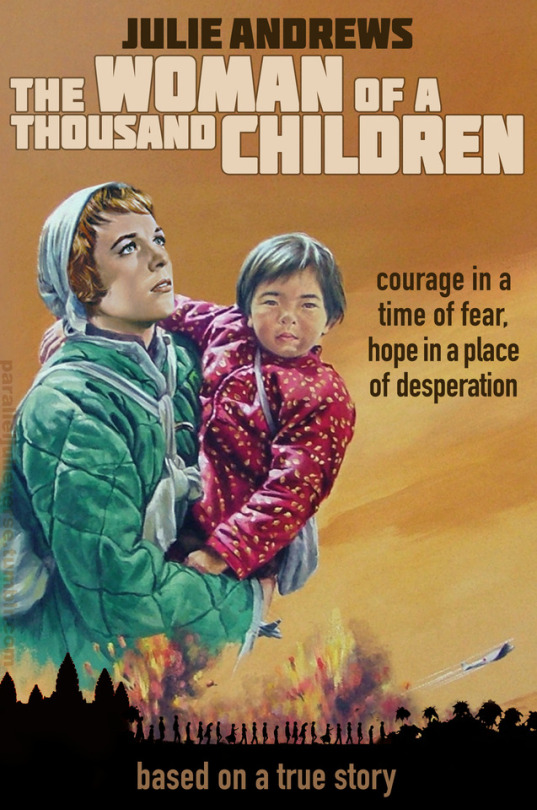

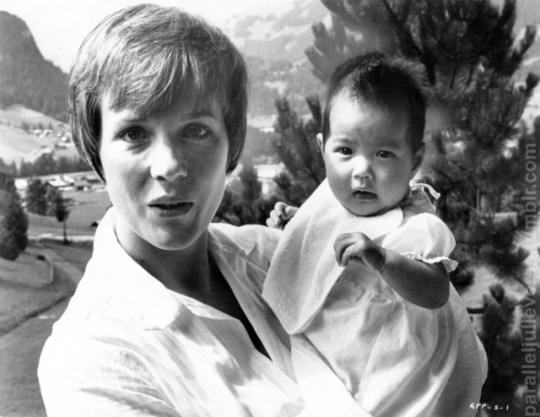
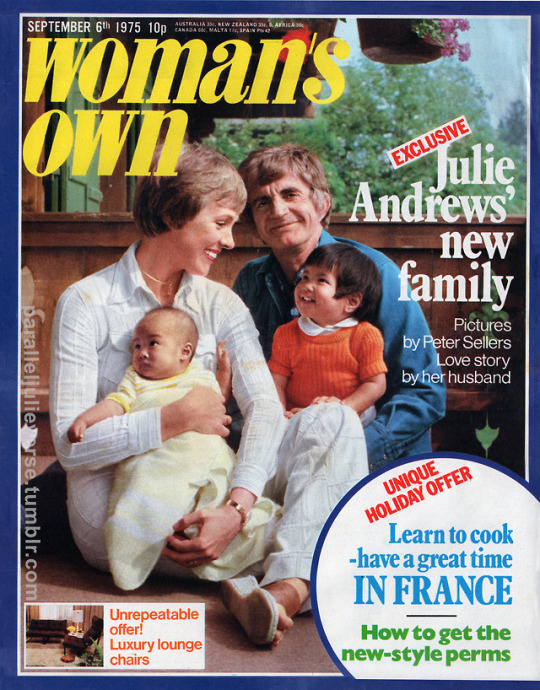
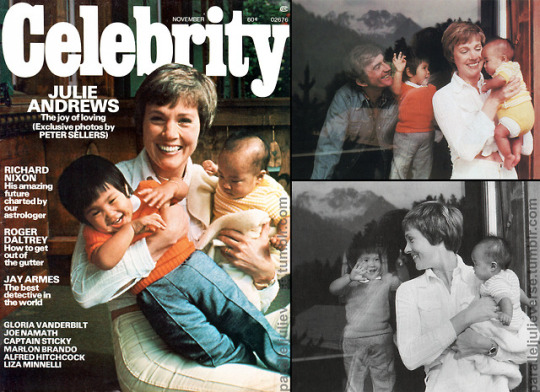
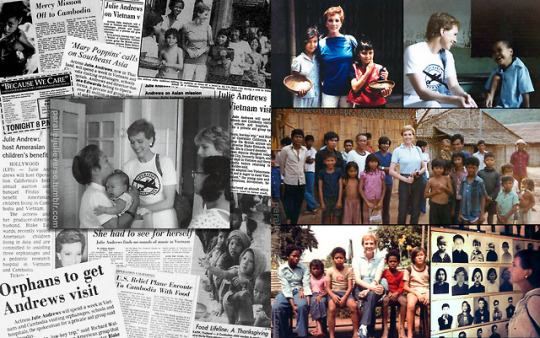
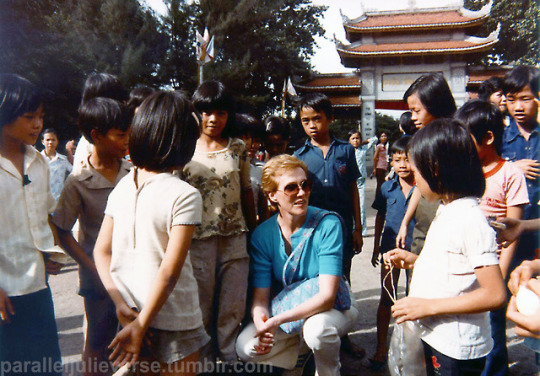
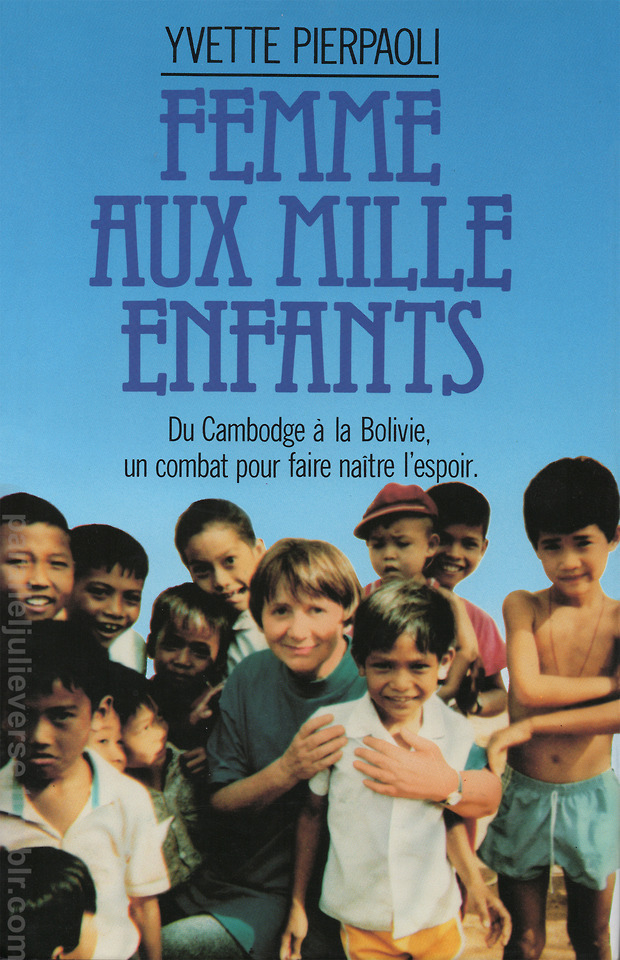
It’s been a while since the Parallel Julieverse profiled one of the many unrealised projects that pepper the long career of Julie Andrews. From long-gestating productions lost in the planning pipelines to others that barely graduated beyond the drawing board –– with a host of rejections, prevarications, and who-knows-what-the-heck-happened in-between –– they form a tantalising treasure trove of "sliding door” what-ifs that are the stuff of Parallel Julieverse dreams.
This particular lost opportunity is a little more recent than most and touches on an integral aspect of Julie’s public image that we’ve not explicitly considered before: namely, her long association with humanitarian aid work in Southeast Asia. Long before Angelina Jolie became the contemporary poster person of Southeast Asian celebrity diplomacy, Julie Andrews was actively involved in supporting development efforts in the Indochinese peninsula.
As early as the mid-60s, Julie was using her budding celebrity to help agencies working in Southeast Asia through endorsements for Foster Parents Plan –– a role she would perform for many decades (Beyette: VI-1) –– and as a pioneering celebrity sponsor of the Committee for Responsibility, an NGO formed in 1966 to bring child casualties of the Vietnam war to the US for medical care and rehabilitation (Murphy, 1). She and husband Blake Edwards joined the Board of the Committee in 1969 and worked tirelessly on its behalf (Scott, 3). Julie made numerous public appearances in support of the organisation, including emceeing a special symphonic concert (Riley, 17) and hosting a charity art exhibition ( Loper, I-14). She also devoted a pre-filmed segment of her and Blake’s one-hour interview on the David Frost Show to profiling her work with war-injured children (Fanning: 33). This sustained personal involvement with the Committee led to Julie and Blake’s own adoption of two Vietnamese war orphans in the mid-1970s, a fact that was widely publicised in the popular press of the time (Eder: 13D; Linet: 8-10; Wilkins: 42-49).
Later in the 1970s, Julie and Blake become deeply involved with Operation California, another NGO with a strong Southeast Asian focus. Founded by two former anti-war activists, Richard Walden and Llewellyn Werner, Operation California become the subject of some controversy when the organisation aimed to send an airlift of aid directly to Cambodia in 1979 when the country still wasn’t formerly recognised by the US government. Refused assistance by the State Department, the flight finally got off the ground after Julie and Blake personally intervened and donated $75,000 of their own money (Baird: IX-13; Kaye: 12; Mitchell: I-11).
That early support for Operation California –– later rebadged, Operation USA –– would become a defining lifelong commitment. Both Julie and Blake were founding board members of the fledgling NGO and worked tirelessly on its behalf. Through her high-profile international status, Julie has been a huge boon for the organisation, operating as their key celebrity spokesperson for the past four decades and helping secure vital support for their relief efforts. Over the years, her extensive advocacy work for Operation California/USA has ranged from headlining gala star-studded TV specials and live concerts to hosting low-key annual benefits for So.Cal. A-listers (Conway: E-31; Crowder: 4-B; Gindick: V-3; Morrison: A-15).
Wanting to see first-hand and “to learn for herself” about the situation on the ground, Julie decided to make a personal visit to the war-ravaged areas of Southeast Asia in 1982. “It’s one thing to speak about [these issues] from an intellectual point of view,” she said, but “I thought I ought to be able to speak personally” (Hendrix: V-1). On an even more personal level, Julie said she also wanted to take the trip for her two adopted daughters:
“In some way, I went for them. I always wanted to be able to talk to my daughters about their home country. And when I went –– I never thought I would be able to love them more than I did already as my own children...[but] it made me want to hold them so tightly” (Hendrix: V-9).
Joining Richard Walden, Director of Operation California, Julie embarked on a 12-day visit to some of the most conflict-affected areas of Vietnam and Cambodia and the teeming refugee camps along the Thai border. It was, by her own admission, a life-changing experience. Coming face-to-face with “the common denominator of human suffering,” she recalled on her return, "was a real jerk to the soul” (Hendrix: V-1):
“[I] was so staggered, so assaulted by emotions...I saw it and I smelt it...a child dying in front of my eyes from malnutrition...little polio victims running around on all fours like their backs had been snapped...[refugees in camps] so filthy and hot. They’re packed like sardines. There’s absolutely no room there but your own body space. And to see them light up and smile when you walk through, it’s almost more than you could bear” (Hendrix: V-8).
It was on this trip that Julie first met and befriended Yvette Pierpaoli, a remarkable Frenchwoman who devoted her life to helping displaced children in Cambodia and, later, other war-torn countries around the globe (Beck 1985: S5; Pierpaoli, 1992). Pierpaoli had gone to Cambodia as a young businesswoman in 1966 to run an export company but soon found herself caught up in the turmoils that engulfed the region. As the Khmer Rouge took control of rural areas and refugees fled to Phnom Penh, Pierpaoli threw herself into helping displaced children, turning her house into a “transit center, with 22 to 25 lost or orphaned children there at all times” as she sought safe passage for them across the border (Cushing: V-30). When foreigners were evicted from Cambodia, Pierpaoli moved to Bangkok were she continued her relief efforts in the region, before eventually relocating to Central America in 1985 to work with children there.
Throughout this time, Julie and Pierpaoli kept in touch. Keen to make a “film that would feature the plight of the orphans...in Vietnam, Thailand, and Cambodia,” Julie announced in 1985 that she had negotiated the film rights to Pierpaoli’s story (Beck 1985: S5-4). These initial reports stated Julie would star and Blake Edwards would produce but, otherwise, details were sketchy. Two years later in 1987, the project –– which Julie called “my labor of love” –– was claimed to be “in a state of real progress” (Beck 1987: C21). The screenplay was being finalised, focussing on “the period following the Cambodian occupation by Pol Pot, when thousands upon thousands were pouring into refugee camps and Yvette saved so many children.” In these later reports, Julie was less certain whether she would play the lead role or restrict her involvement to a behind-the-scenes capacity. “I’d love to take on the role,” she affirmed, “but I just want to be sure I’d be best for it. The most important thing to me is making a film that does justice to the story––the story of a remarkable woman” (ibid.).
Sadly, after this point, the trail on the proposed Pierpaoli film goes cold and no further press reports were forthcoming. Perhaps it was derailed by financing problems or ran aground on one of the many other shoals that bedevil big film projects in what Hollywood insiders term “development hell” (Hughes 2003). The late 80s was also a period of reported turmoil in the Edwards’ family life so the project possibly got further sidelined by personal issues (Doten: 10-13; Honeycutt: 23; Michaelson: VI-1). Either way, the Yvette Pierpaoli story never got made and more’s the pity. Apart from the inherent worthiness of the material, the film would have been a valuable addition to Julie’s mid-career screen work. In the absence of a script, it’s difficult to know how well the property would have worked for Julie. But in terms of basic themes –– surrogate motherhood, a compassionate heroine aiding small children, resistance to authoritarian regimes, etc. –– the project had all the classic hallmarks of the popular Julie Andrews persona. Moreover, in the mid-80s, Julie was really working to stretch herself as a film actor, taking on some quite meaty dramatic roles such as her critically lauded back-to-back performances in That’s Life (1986) and Duet for One (1986), and the Pierpaoli property could have continued the trend. The French accent would have been a sticking point, though one imagines the character would likely have had a nationality change had Julie played the part. Anyway, it’s another one for the wistful catalogue of “if onlys”!
As for Yvette Pierpaoli, she continued her selfless commitment to international aid work, establishing her own French-based agency and partnering with NGOs around the world. In 1992, she penned her memoirs, Femme aux mille enfants / Woman of a Thousand Children. Focussed almost entirely on her relief efforts, there is no mention of the proposed film project with Julie, though by Pierpaoli’s own admission, “I was never drawn to the cinema and was incapable of distinguishing between Gary Cooper and Belmondo” (Pierpaoli: 283). Tragically, in 1999, Pierpaoli was killed in an automobile accident in Albania, together with David and Penny McCall of Refugees International and their driver, en route to deliver aid to refugees of the war in Kosovo (”Accident”: A-2). She was 61 years old.
Sources:
“Accident Kills Key Kosovo Volunteers.” The San Francisco Examiner. 20 April 1999: A2.
Baird, Barbara. “Small Group Moves Mountains of Aid to Southeast Asia ‘By Seat of Pants’.” The Los Angeles Times. 16 December 1979: IX-2,13.
Beck, Marilyn. “Andrews To Tell Orphans Story.” The Chicago Tribune. 8 November 1985: S5-4.
Beck, Marilyn. “Julie May Get Duet of Nominations.” Daily News. 10 February 1987: C21.
Beyette, Beverly. “A ‘Lesson in Humanity’ for Stars, Average Folk.” The Los Angeles Times. 3 February 1985: VI-1.
Conway, Ann. “The Little Aid Group That Could.” The Los Angeles Times. 27 June 2003: E31.
Crowder, David. “Julie Andrews Helping Lead Mobilization for Starving.” El Paso Times. 16 March 1985: 4-B.
Cushing, Diana. “A Place for ‘Displaced’ Children.” The Los Angeles Times. 6 December 1987: V30-31.
Doten, Patti. “The Sound of Julie: Alive and Touring.” The Boston Globe. 1 July 1989: 10-13.
Eder, Shirley. “Julie Andrews a Mother Again.” The Philadelphia Inquirer. 21 April 1975: 13D.
Fanning, Win. “On Air: Julie Andrews, A ‘Playmate’?” The Pittsburgh Post-Gazette. 6 July 1970: 33.
Gindick, Tia. “Art Round-Up for Operation California.” The Los Angeles Times. 13 June 1988: V-3.
Grant, Lee. “Star-Studded Show Set to Benefit Cambodian People.” The Los Angeles Times. 22 December 1979: IV-1.
Hendrix, Kathleen. “Julie Andrews Moved by Plight of Asian Children.” The Los Angeles Times. 22 September 1982: V-1,8-9.
Honeycutt, Kirk. “His Pain, His Gain.” The Los Angeles Times Calendar. 5 May 1991: 5, 23-25.
Hughes, David. Tales from Development Hell: Hollywood Film-making the Hard Way. London : Titan, 2003.
Kaye, Jeffrey. “Celebrities, Charity And Controversy.” The Washington Post. 27 January 1980: 12.
Linet, Beverly. “Julie Andrews, The Joy of Loving.” Celebrity. 1: 6, November 1975: 8-10.
Loper, Mary-Ann. “Julie Andrews Aiding the War-Injured.” The Los Angeles Times. 28 February 1971: I-14.
Michaelson, Judith. “Julie Andrews: Still a Fair Lady.” The Los Angeles Times. 9 August 1984: VI-1,5.
Mitchell, John L. “First Direct Refugee Aid Flight from U.S. Lands in Cambodia With Food, Medicine.” The Los Angeles Times. 25 November 1979: V-3.
Morrison, Pat. “Charity Case.” The Los Angeles Times. 30 January 2013: A-15.
Murphy, Jean. “Rehabilitating War-Injured Children Goal of COR.” The Los Angeles Times. 19 June 1970: IV-1, 21.
Pierpaoli, Yvette. Femme aux mille enfants. Paris: Club France Loisirs, 1992.
Riley, Robert. “Doctors Symphony in Wilshire Ebell Concert.” The Los Angeles Times. 13 April 1970: 17.
Scott, Vernon. “Julie Andrews Working with Vietnam Children.” The Herald. 20 August 1970: 3.
Wilkins, Barbara. “Couples: Soothing Blake Edwards and Raising Babies Result in a Thoroughly Joyous Julie.” People. 7:10, 14 March 1977: 42-49.
Special thanks to Hanne.
© 2019, Brett Farmer. All Rights Reserved.
#julie andrews#yvette pierpaoli#southeast asia#refugees#operation usa#vietnam#cambodia#thailand#international aid#international adoption#film history#the parallel julieverse
30 notes
·
View notes
Text
(Audio) B Dvine Presents: Project Wars The 20 Emcee Assault @BDVINE631
(Audio) B Dvine Presents: Project Wars The 20 Emcee Assault @BDVINE631
B. DVINE Feat Solomon Childs, krumsnatcha, YDB & many more! – Project wars – The 20 Emcee assault!
Emcee / producer B. Dvine hits you with an all out attack with this new wild posse cut “Project Wars: The 20 Emcee Assault” Which features some hip hop vets as well as some up and comers from all over the globe includingSolomon Childs, OneMike, Karnage Ca$hman, Cuban Pete, Krumbsnatcha, Menace…
View On WordPress
0 notes